Vinegar cleaning tips are about to become your new best friend! Are you tired of harsh chemicals and expensive cleaning products that promise the world but often fall short? I know I was! That’s why I dove headfirst into the world of natural cleaning solutions, and let me tell you, the results have been amazing. For generations, vinegar has been a staple in households, not just for cooking, but for its incredible cleaning power. Think back to your grandmother’s cleaning rituals – chances are, vinegar played a starring role!
From ancient civilizations using it to disinfect wounds to modern-day eco-conscious individuals seeking sustainable alternatives, vinegar’s cleaning prowess is undeniable. But why should you embrace these vinegar cleaning tips? Well, beyond being budget-friendly and readily available, vinegar is a powerhouse against grime, odors, and even stubborn stains. Plus, it’s a fantastic way to reduce your exposure to harmful chemicals, creating a healthier home environment for you and your loved ones. In this article, I’m going to share my favorite DIY vinegar cleaning hacks that will transform your cleaning routine and leave your home sparkling – naturally!
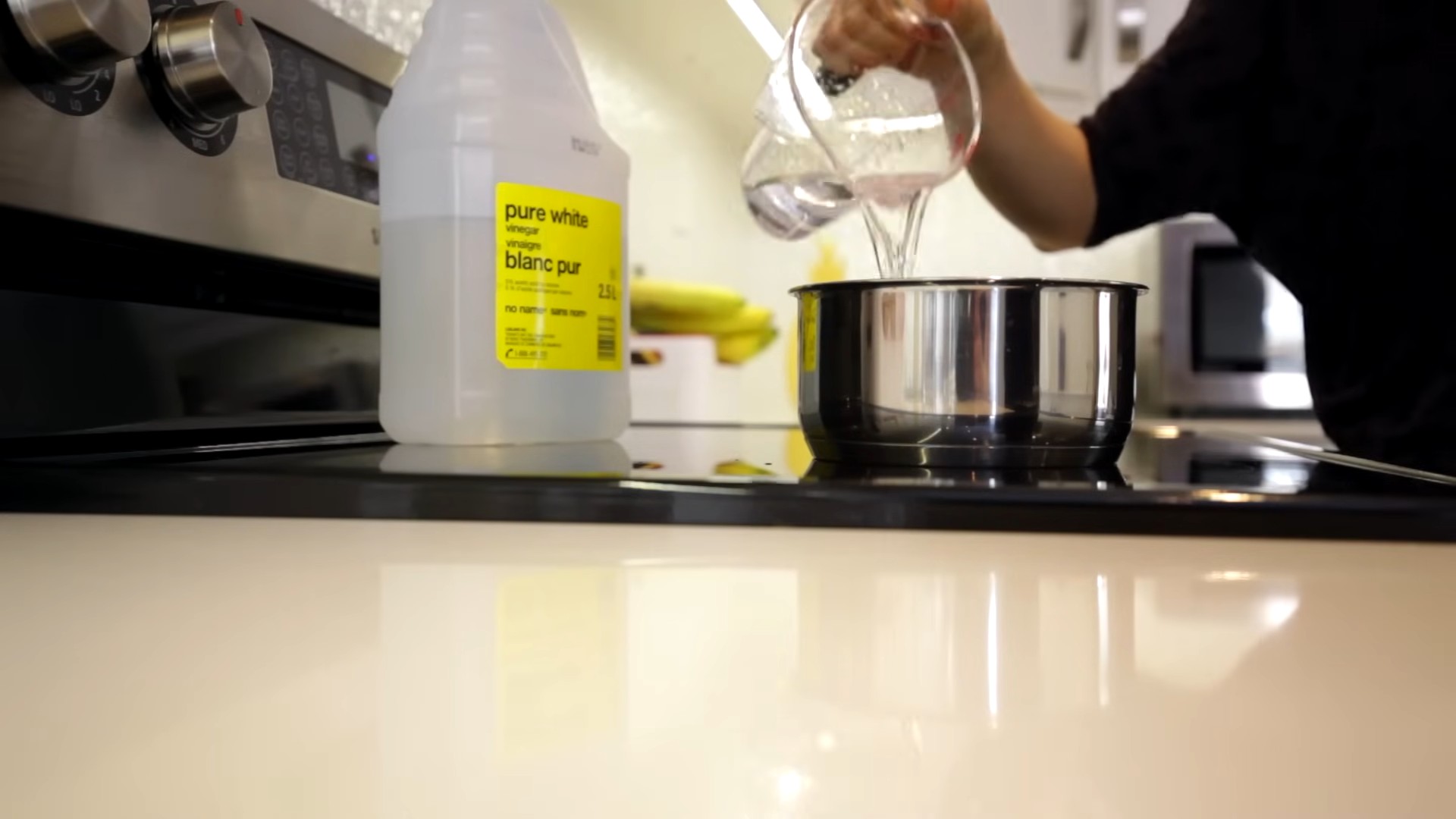
DIY All-Purpose Vinegar Cleaning Powerhouse
Vinegar. It’s not just for salads anymore! I’m constantly amazed by the versatility of this humble kitchen staple. Forget those expensive, chemical-laden cleaners – vinegar is a natural, effective, and budget-friendly alternative for tackling a surprising number of cleaning tasks around your home. I’m going to walk you through how to create your own all-purpose vinegar cleaning solution and then share some of my favorite ways to use it.
Creating Your All-Purpose Vinegar Cleaning Solution
This is the foundation of your vinegar cleaning arsenal. It’s super simple, and you can customize it with essential oils for a pleasant scent.
- What You’ll Need:
- White distilled vinegar
- Water (distilled is best, but tap water works too)
- Spray bottle (a dark-colored one is ideal to protect essential oils from light)
- Optional: Essential oils (lemon, lavender, tea tree, eucalyptus – choose your favorites!)
- Mix the Solution: In your spray bottle, combine equal parts white distilled vinegar and water. For example, if you’re using a 16-ounce spray bottle, use 8 ounces of vinegar and 8 ounces of water.
- Add Essential Oils (Optional): If you want to add a scent, add about 10-20 drops of your chosen essential oil(s) to the spray bottle. I usually go for lemon or lavender for a fresh, clean smell.
- Shake Well: Secure the spray nozzle and shake the bottle vigorously to ensure the vinegar, water, and essential oils (if using) are thoroughly mixed.
- Label Your Bottle: This is important! Clearly label the bottle “Vinegar Cleaning Solution” so you don’t accidentally use it for something else.
Vinegar Cleaning Applications: My Favorite Uses
Now that you have your all-purpose vinegar cleaning solution, let’s put it to work! I’ve broken down some of my favorite uses into categories for easy reference.
Kitchen Cleaning
The kitchen is a breeding ground for germs and grime, but vinegar can handle it!
- Cleaning Countertops: Spray your vinegar solution onto countertops and wipe clean with a microfiber cloth. Avoid using vinegar on natural stone surfaces like granite or marble, as it can etch the surface.
- Degreasing the Stovetop: For greasy stovetops, spray the vinegar solution and let it sit for a few minutes to loosen the grease. Then, wipe clean with a sponge or cloth. For stubborn grease, you can sprinkle baking soda on the surface before spraying with vinegar. The fizzing action helps to lift the grease.
- Cleaning the Microwave: This is one of my favorite tricks! Place a microwave-safe bowl filled with 1 cup of water and 1/4 cup of vinegar in the microwave. Microwave on high for 5 minutes. The steam will loosen any splatters and grime. Carefully remove the bowl (it will be hot!) and wipe the inside of the microwave clean with a cloth.
- Cleaning the Dishwasher: To freshen and clean your dishwasher, pour 1 cup of white vinegar into the bottom of the empty dishwasher and run a normal cycle. This helps to remove mineral buildup and odors.
- Cleaning Cutting Boards: After using a cutting board, especially for raw meat, spray it with vinegar and let it sit for a few minutes before rinsing with hot water. This helps to kill bacteria.
- Cleaning the Sink: Spray your sink with vinegar and scrub with a sponge or brush. Rinse thoroughly. For extra cleaning power, sprinkle baking soda in the sink before spraying with vinegar.
Bathroom Cleaning
Vinegar is a great alternative to harsh chemical cleaners in the bathroom.
- Cleaning Showerheads: Mineral buildup can clog showerheads and reduce water pressure. To clean your showerhead, fill a plastic bag with vinegar and secure it around the showerhead with a rubber band, ensuring the showerhead is submerged in the vinegar. Let it soak for at least 30 minutes, or even overnight for heavily clogged showerheads. Remove the bag and run the shower to flush out any remaining vinegar and debris.
- Cleaning Shower Doors and Walls: Spray your vinegar solution onto shower doors and walls to remove soap scum and water stains. Let it sit for a few minutes, then scrub with a sponge or brush and rinse thoroughly.
- Cleaning Toilets: Pour 1 cup of vinegar into the toilet bowl and let it sit for at least 30 minutes, or even overnight. Then, scrub with a toilet brush and flush. For extra cleaning power, you can sprinkle baking soda into the bowl before adding the vinegar.
- Cleaning Mirrors and Windows: Vinegar is a fantastic glass cleaner! Spray your vinegar solution onto mirrors and windows and wipe clean with a microfiber cloth for a streak-free shine.
Laundry Room Cleaning
Vinegar can be a surprising addition to your laundry routine.
- Fabric Softener: Add 1/2 cup of white vinegar to your washing machine’s fabric softener dispenser. Vinegar helps to soften clothes naturally and remove detergent residue. Don’t worry, your clothes won’t smell like vinegar after they’re washed!
- Laundry Booster: Add 1 cup of white vinegar to your washing machine along with your regular detergent. Vinegar helps to brighten colors and remove odors.
- Removing Mildew Odors: If your washing machine has a mildew odor, run an empty cycle with 2 cups of white vinegar. This will help to kill the mildew and freshen the machine.
Other Cleaning Uses
The possibilities are endless!
- Cleaning Coffee Makers: To descale your coffee maker, fill the water reservoir with equal parts white vinegar and water. Run a full brewing cycle. Then, run two cycles with fresh water to rinse out any remaining vinegar.
- Cleaning Humidifiers: To clean your humidifier, fill the water tank with white vinegar and let it sit for 30 minutes. Then, rinse thoroughly with water. This helps to remove mineral buildup and prevent mold growth.
- Cleaning Floors (Non-Wood): You can use a diluted vinegar solution to clean tile, linoleum, and vinyl floors. Mix 1/2 cup of white vinegar with 1 gallon of warm water. Mop the floor with the solution and let it air dry. Important: Do not use vinegar on hardwood floors, as it can damage the finish.
- Removing Stickers and Labels: To remove stubborn stickers and labels, soak them with vinegar for a few minutes. The vinegar will help to loosen the adhesive, making it easier to peel off.
- Freshening the Air: To freshen the air in your home, simmer a pot of water with a few tablespoons of vinegar on the stovetop. The vinegar will help to absorb odors.
Important Considerations
While vinegar is a fantastic cleaning agent, there are a few things to keep in mind:
- Don’t Mix with Bleach: Never mix vinegar with bleach, as this can create toxic chlorine gas.
- Test on a Small Area: Before using vinegar on any surface, test it on a small, inconspicuous area to make sure it doesn’t damage the material.
- Avoid on Certain Surfaces: As mentioned earlier, avoid using vinegar on natural stone surfaces like granite and marble, as well as hardwood floors.
- Vinegar Smell: The vinegar smell can be strong, but it dissipates quickly. If you’re sensitive to the smell, open windows or use essential oils to mask the odor.
I hope you found these tips helpful! I’ve been using vinegar for cleaning for years, and I’m always amazed by its effectiveness and versatility. Give it a try, and I think you’ll be impressed too!
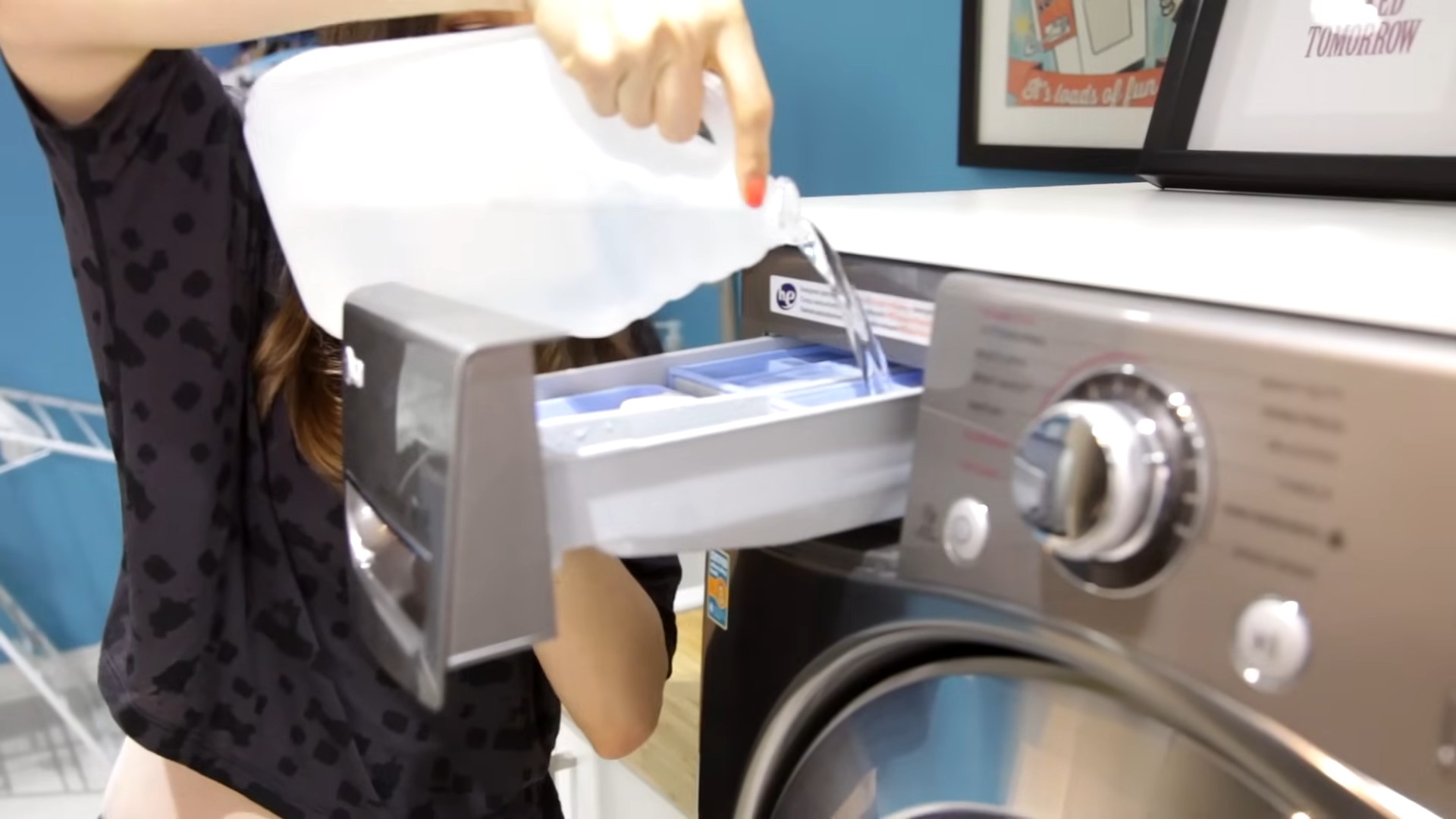
Conclusion
So, there you have it! This simple yet powerful DIY trick using vinegar for cleaning is a game-changer for anyone looking to maintain a sparkling home without relying on harsh chemicals. We’ve explored how vinegar, a readily available and incredibly affordable ingredient, can tackle a multitude of cleaning tasks, from degreasing your kitchen to banishing hard water stains in your bathroom. But why is this a must-try?
Firstly, it’s about health and safety. Traditional cleaning products often contain volatile organic compounds (VOCs) that can irritate your lungs, skin, and eyes. By switching to vinegar, you’re creating a healthier living environment for yourself, your family, and even your pets. Secondly, it’s about cost-effectiveness. A single bottle of vinegar can replace a whole arsenal of specialized cleaning products, saving you a significant amount of money in the long run. Thirdly, it’s about sustainability. Choosing vinegar over chemical-laden cleaners reduces your environmental footprint, contributing to a cleaner and greener planet.
But the beauty of this DIY approach lies in its versatility. Feel free to experiment with different types of vinegar. While white vinegar is the workhorse for most cleaning tasks, apple cider vinegar can add a pleasant scent and is particularly effective for cleaning wood surfaces. You can also infuse your vinegar with citrus peels or herbs like lavender or rosemary for an extra boost of fragrance and cleaning power. For tougher stains, consider creating a paste of vinegar and baking soda – a dynamic duo that can tackle even the most stubborn grime.
Don’t be afraid to get creative! Try adding a few drops of your favorite essential oil to your vinegar cleaning solution for a personalized scent. Lemon, tea tree, and eucalyptus oils are not only fragrant but also possess antibacterial properties, further enhancing the cleaning power of vinegar.
We’ve armed you with the knowledge and the inspiration to transform your cleaning routine. Now, it’s your turn to put this DIY trick to the test. We are confident that you’ll be amazed by the results. Embrace the power of vinegar cleaning and experience the joy of a clean, healthy, and eco-friendly home.
We encourage you to try these tips and share your experiences with us! Let us know what worked best for you, any variations you tried, and any surprising discoveries you made along the way. Your feedback will not only help us improve our recommendations but also inspire others to embrace the power of natural cleaning. Share your stories and photos on social media using #VinegarCleaningMagic and let’s build a community of eco-conscious cleaners!
Frequently Asked Questions (FAQ)
Is vinegar safe to use on all surfaces?
No, vinegar is not safe to use on all surfaces. While it’s a fantastic cleaner for many things, its acidity can damage certain materials. Avoid using vinegar on natural stone surfaces like marble, granite, and limestone, as it can etch and dull the finish. It’s also best to avoid using it on waxed wood furniture, as it can strip the wax. Cast iron cookware should also be avoided, as vinegar can remove the seasoning. Always test vinegar on an inconspicuous area before applying it to a larger surface, especially if you’re unsure about its compatibility. When in doubt, consult the manufacturer’s instructions for the specific surface you’re cleaning.
What type of vinegar is best for cleaning?
White distilled vinegar is generally considered the best type of vinegar for cleaning. It has a high acidity level (around 5%) which makes it effective at dissolving dirt, grime, and mineral deposits. It’s also clear and odorless, so it won’t stain surfaces or leave behind a strong vinegar smell (although the smell does dissipate quickly). While other types of vinegar, like apple cider vinegar, can be used for cleaning, white vinegar is the most versatile and cost-effective option. Apple cider vinegar, with its lower acidity, is better suited for delicate surfaces and can leave a pleasant scent.
How do I get rid of the vinegar smell after cleaning?
The vinegar smell typically dissipates within a few hours. To speed up the process, you can open windows and doors to ventilate the area. You can also place bowls of baking soda around the room to absorb the odor. Another option is to add a few drops of your favorite essential oil to your vinegar cleaning solution. Citrus oils, lavender oil, and tea tree oil are all great choices that will leave behind a fresh, clean scent. You can also simmer a pot of water with citrus peels or spices like cinnamon and cloves to naturally freshen the air.
Can I mix vinegar with bleach?
Absolutely not! Mixing vinegar with bleach is extremely dangerous and can create toxic chlorine gas. This gas can cause severe respiratory problems, burns, and even death. Never, under any circumstances, mix vinegar with bleach or any other cleaning product that contains bleach. Always use vinegar and bleach separately, and rinse surfaces thoroughly with water after using one before applying the other. Your safety is paramount.
How do I clean my coffee maker with vinegar?
Cleaning your coffee maker with vinegar is a simple and effective way to remove mineral buildup and keep it running smoothly. Fill the water reservoir with a solution of equal parts white vinegar and water. Run the coffee maker through a full brewing cycle. Then, discard the vinegar solution and run the coffee maker through two or three cycles with fresh water to rinse away any remaining vinegar. This process will help to descale your coffee maker and improve the taste of your coffee.
Can vinegar kill mold?
Yes, vinegar can kill mold. White distilled vinegar is an effective mold killer, killing up to 82% of mold species. To kill mold with vinegar, pour undiluted white vinegar into a spray bottle. Spray the affected area thoroughly and let it sit for at least an hour. Then, scrub the area with a brush or sponge and rinse with water. Be sure to dry the area completely to prevent mold from returning. For porous surfaces like drywall, you may need to repeat the process several times.
How do I clean my microwave with vinegar?
Cleaning your microwave with vinegar is a quick and easy way to remove splatters and odors. Combine equal parts white vinegar and water in a microwave-safe bowl. Microwave the mixture on high for 5-10 minutes, or until the solution boils and the microwave is filled with steam. Carefully remove the bowl (it will be hot!) and wipe down the inside of the microwave with a clean cloth or sponge. The steam will loosen any stuck-on food, making it easy to wipe away.
Is vinegar effective for cleaning laundry?
Yes, vinegar can be a great addition to your laundry routine. Adding 1/2 cup of white vinegar to your washing machine during the rinse cycle can help to soften clothes, remove odors, and brighten colors. Vinegar can also be used as a natural fabric softener and can help to reduce static cling. It’s especially effective for removing mildew smells from towels and workout clothes. Just be sure not to use vinegar with bleach, as mentioned earlier.
How often should I clean with vinegar?
The frequency of cleaning with vinegar depends on the specific task and the level of use. For high-traffic areas like kitchens and bathrooms, you may want to clean with vinegar once or twice a week. For less frequently used areas, such as guest rooms or storage spaces, cleaning with vinegar once a month may be sufficient. Regularly cleaning with vinegar can help to prevent the buildup of dirt, grime, and mineral deposits, making your cleaning tasks easier in the long run.

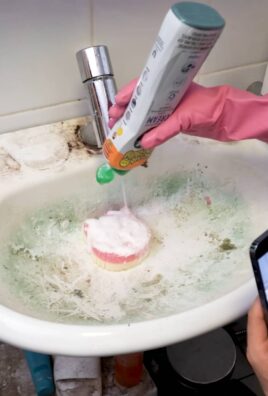
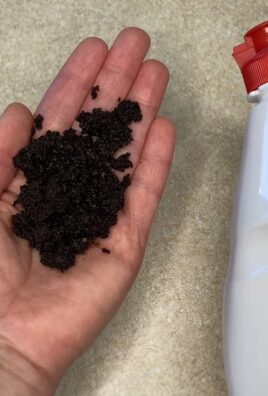
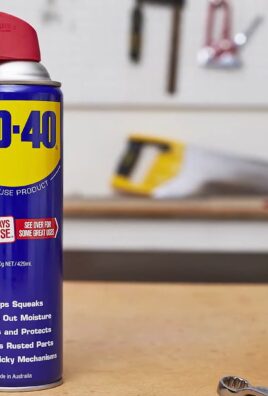
Leave a Comment